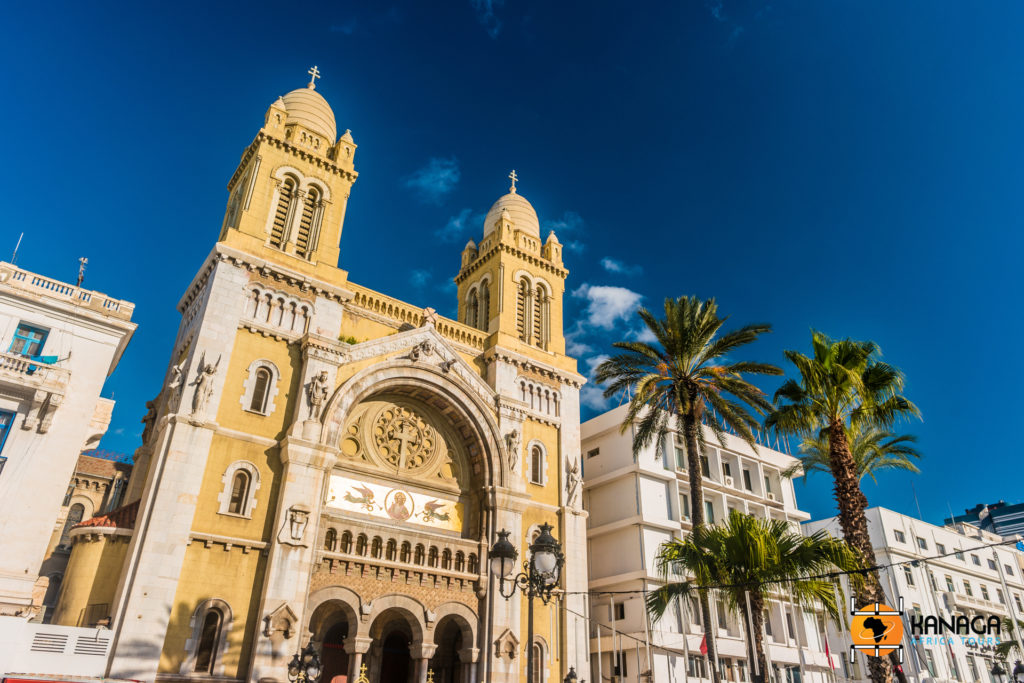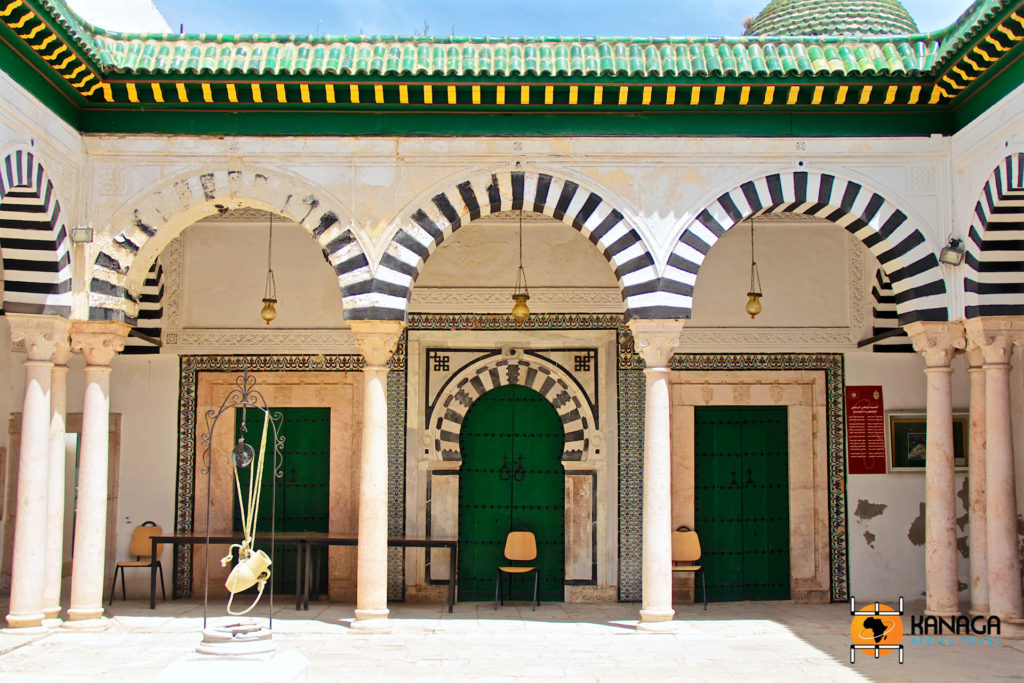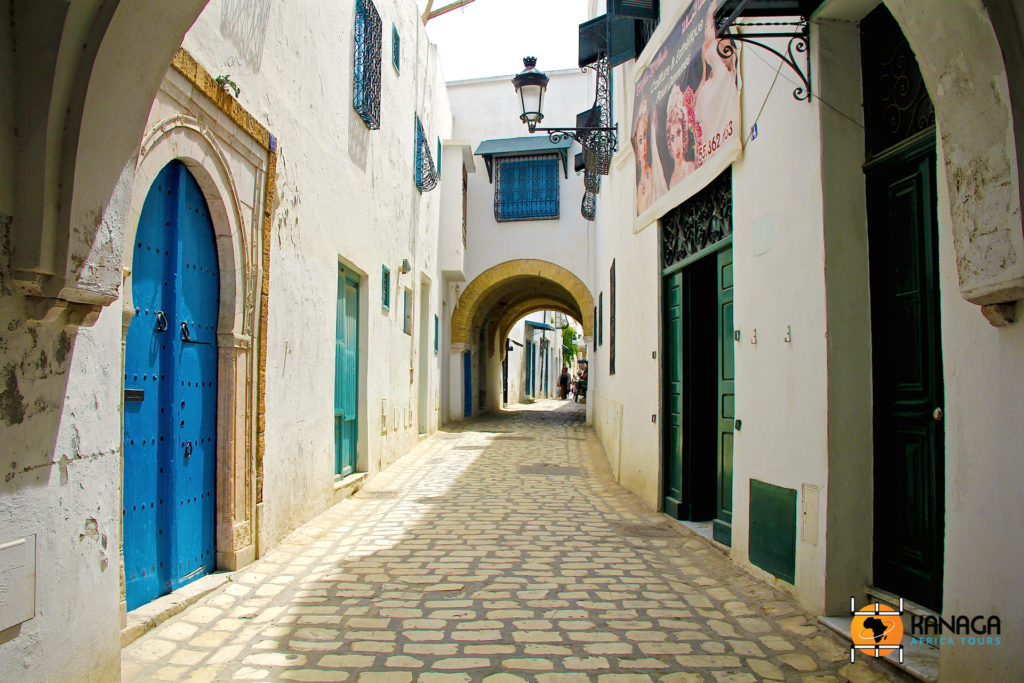© I. Fornasiero
A metropolis where the dynamism of the present and the memory of a glorious past blend harmoniously, Tunis enchants with its fascinating blend of the Arab and Mediterranean worlds, the soft hues of the ancient and the bright colours of the contemporary.
A vibrant and expanding capital, Tunis is also the country’s largest city. It is home to almost a fifth of the entire population, who live between the historic core with its well-preserved Medina, the ‘European’ city, built at the beginning of the 20th century, and finally in the new districts that have developed between the coastal coast and the large inland lagoon.
Declared a UNESCO World Heritage Site, the Tunis Medina is the most beautiful and best preserved in all of North Africa. It is the historical and spiritual heart of the city, with buildings dating from the 18th and 19th centuries. It is home to the souks, the markets of the various artisan guilds, with traditional workshops and ateliers arranged hierarchically around the great Jamaa ez-Zitouna mosque, or ‘olive mosque’, dating from the 9th century and one of the most important in all of Islam.
From the imposing gates to the Medina, the only remaining vestige of the ancient city walls, now dismantled, one ventures through winding alleys, vaulted passages and markets teeming with activity and merchandise of all kinds. Fabrics, perfumes, jewellery, spices, ceramics, beauty products, carpets, dates and other dried fruits, in a feast of colours contrasting with the placid tranquillity of the neighbouring alleyways, which enchant with their white walls, green tiled domes and characteristic wooden portals decorated with large black nails arranged in the shape of stars, flowers or stylised cypresses.
As you wander through the souks, you will come across monuments, mosques, mederseys, stately palaces and the ‘dar’, old houses that have been converted into museums, places of culture, accommodation or tea rooms. But it is from the air that Tunis offers itself in all its beauty: a pastel-coloured expanse of minarets and domes. You only need to be accompanied to one of the many terraces tiled with reflective ceramics to enjoy a magnificent view of the city, from the ancient streets of the Medina to the lovely tree-lined avenues of the modern districts, with their outdoor cafés and contemporary, Art Deco and Art Nouveau buildings.
One of Tunis’ main attractions is undoubtedly the Bardo Archaeological Museum, inaugurated in 1888, which is a must-see not only for its rich collection of Roman mosaics, to which precious finds from prehistoric times to the present day are added, but also for its very structure. The museum is in fact housed in a palace dating back to the second half of the 19th century, a fine example of residential architecture, with rich decorations, elegant halls and a refined harmony of colours.
The visit is a history lesson. It is a journey back in time that allows us to understand the cultural evolution of the country, told through artefacts that bear witness to the different dominations that have affected Tunisia over the centuries, from ancient Carthage to the Ottoman era.
A few kilometres from the city centre, taking the coast road along the Gulf of Tunis, you come to Sidi Bou Said, a famous fishing village with typical blue and white houses built on the side of a hill facing the sea.
Once a favourite holiday spot for Tunis’s wealthy families, this village with its simple, orderly layout, reminiscent of the classic pattern of whitewashed Mediterranean buildings with blue window frames, is now a must-see for anyone visiting Tunisia. The entrances to the houses are unforgettable: doors painted blue or bright yellow, arched or rectangular, framed by sculpted stones, ceramics or black and white marble… each one different from the next!
Each alleyway offers a particular glimpse, between the simplicity of the houses and the refined taste of the art galleries, craft boutiques and cafés, from whose terraces you can enjoy the splendid view of the Gulf of Tunis while sipping a mint tea.







